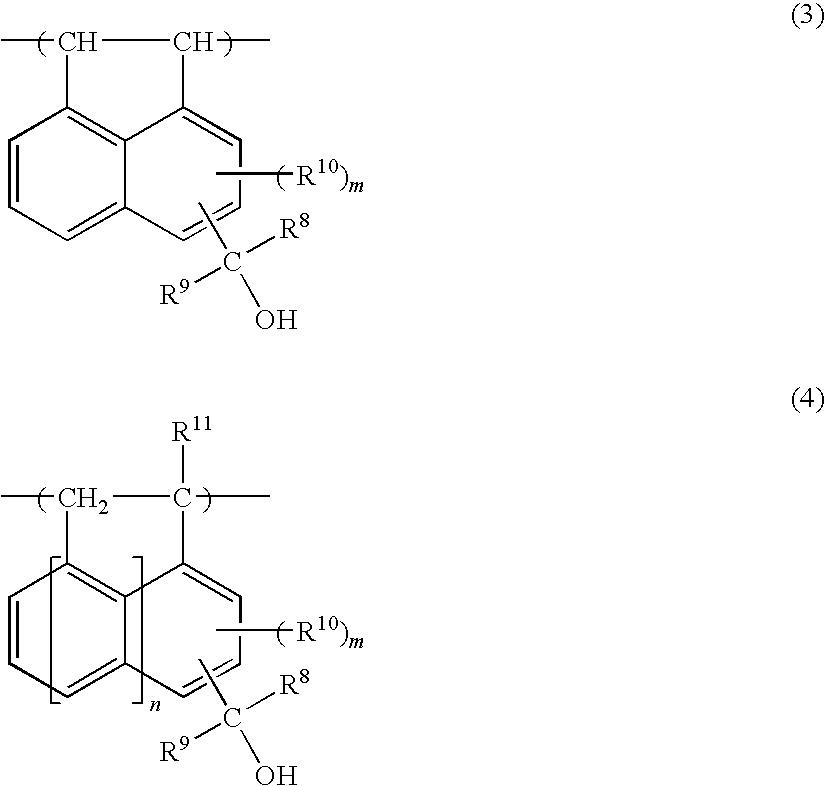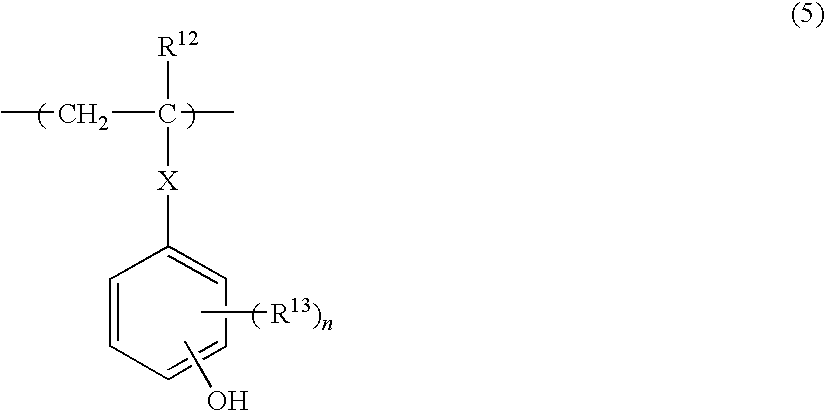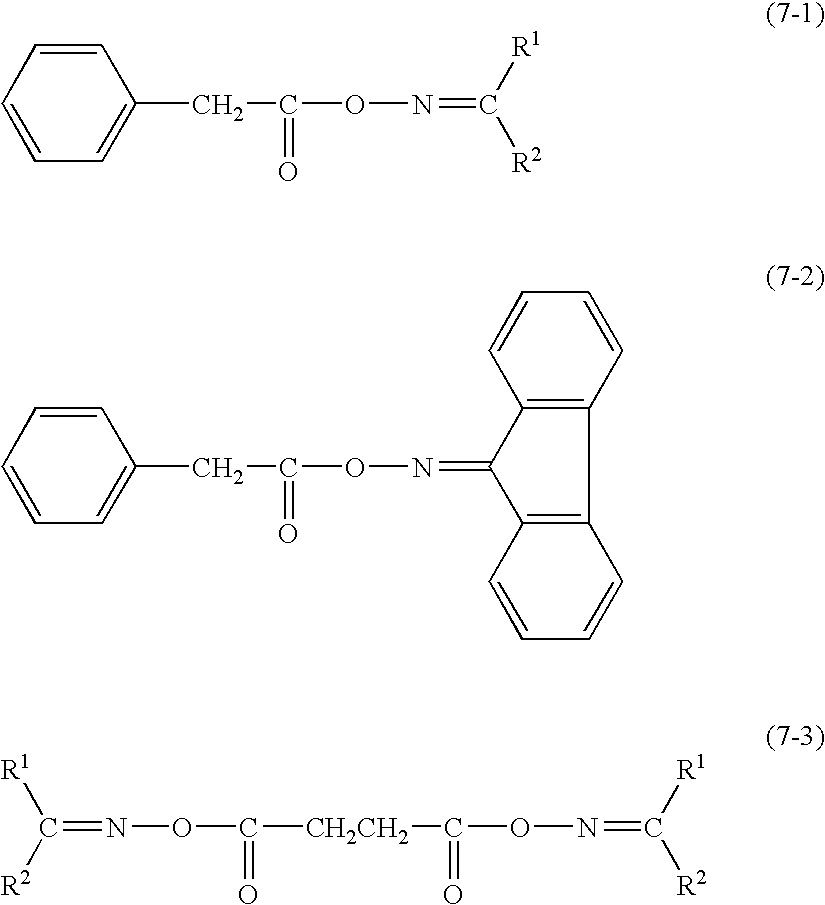Method of forming pattern and composition for forming of organic thin-film for use therein
- Summary
- Abstract
- Description
- Claims
- Application Information
AI Technical Summary
Benefits of technology
Problems solved by technology
Method used
Image
Examples
synthetic example 1
Preparation of Underlayer Film Composition (I)
[0119]An underlayer film composition (I) containing a hydrolyzate-condensate (resin) of Si(OCH3)4 and CH3Si(OCH3)3 was prepared as follows.
[0120]A maleic acid aqueous solution (maleic acid: 0.8 parts, distilled water: 34 parts) was added dropwise to a solution of Si(OCH3)4 (40 parts) and CH3Si(OCH3)3 (8 parts) in 1-ethoxy-2-propanol (117 parts) heated at 60° C. The solution was stirred at 60° C. for four hours and concentrated under reduced pressure to obtain a resin solution (I) (100 parts). The weight average molecular weight (Mw) of the polymer in the resin solution (I) was 2000. Mw of the polymer in the resin solution (I) was measured by gel permeation chromatography (GPC) using monodisperse polystyrene as a standard and using GPC columns (manufactured by Tosoh Corp., G2000HXL×2, G3000HXL×1, G4000HXL×1) at a flow rate of 1.0 ml / minute, using tetrahydrofuran as an eluate, at a column temperature of 40° C. The underlayer film compositi...
synthetic example 2
Preparation of Underlayer Film Composition (II)
[0121]A underlayer film composition (II) containing a polymer (resin) obtained by radical polymerization of acenaphthylene and 5-hydroxymethylacenaphthylene was prepared as follows.
[0122]A separable flask equipped with a thermometer was charged with acenaphthylene (8 parts), 5-hydroxymethylacenaphthylene (4 parts), n-butyl acetate (50 parts), and azobisisobutyronitrile (4 parts). The mixture was polymerized at 80° C. for seven hours with stirring. After the reaction, the reaction mixture was diluted with N-butyl acetate (100 parts) and the organic layer was washed with a large amount of a mixed solvent of water and methanol (mass ratio=1:2). The solvent was evaporated to obtain a polymer (II) with Mw of 1500. The resulting polymer (II) (1 part) and triphenylsulfonium trifluoromethanesulfonate (0.1 part) were dissolved in ethyl lactate (20 parts) to obtain the underlayer film composition (II).
synthetic example 3
Preparation of Underlayer Film Composition (III)
[0123]p-Hydroxyphenyl methacryl anilide (see the following formula (P-1-1)) (90 g), p-t-butoxystyrene (see the following formula (P-1-2)) (30 g), azobisisobutyronitrile (9 g), and 2,4-diphenyl-4-methyl-1-pentene (5 g) were dissolved in methanol. The mixture was polymerized under refluxing (63° C.) for 8 hours. The polymer solution was purified by reprecipitation using a methanol / water mixture, then using an isopropyl alcohol / heptane mixture to obtain a polymer with a monomer molar ratio of p-hydroxyphenyl methacrylanilide / p-t-butoxystyrene=70 / 30, having Mw of 7000 and Mw / Mn of 1.77. This polymer is designated as a resin (III). The underlayer film composition (III) was obtained by dissolving the resin (III) (1 part), triphenylsulfonium trifluoromethanesulfonate (0.1 part), and, as a crosslinking agent, “NIKALAC MX-750” (manufactured by Sanwa Chemical Co., Ltd.) (0.3 parts) in 1-butanol (20 parts).
PUM
 Login to View More
Login to View More Abstract
Description
Claims
Application Information
 Login to View More
Login to View More - R&D
- Intellectual Property
- Life Sciences
- Materials
- Tech Scout
- Unparalleled Data Quality
- Higher Quality Content
- 60% Fewer Hallucinations
Browse by: Latest US Patents, China's latest patents, Technical Efficacy Thesaurus, Application Domain, Technology Topic, Popular Technical Reports.
© 2025 PatSnap. All rights reserved.Legal|Privacy policy|Modern Slavery Act Transparency Statement|Sitemap|About US| Contact US: help@patsnap.com



